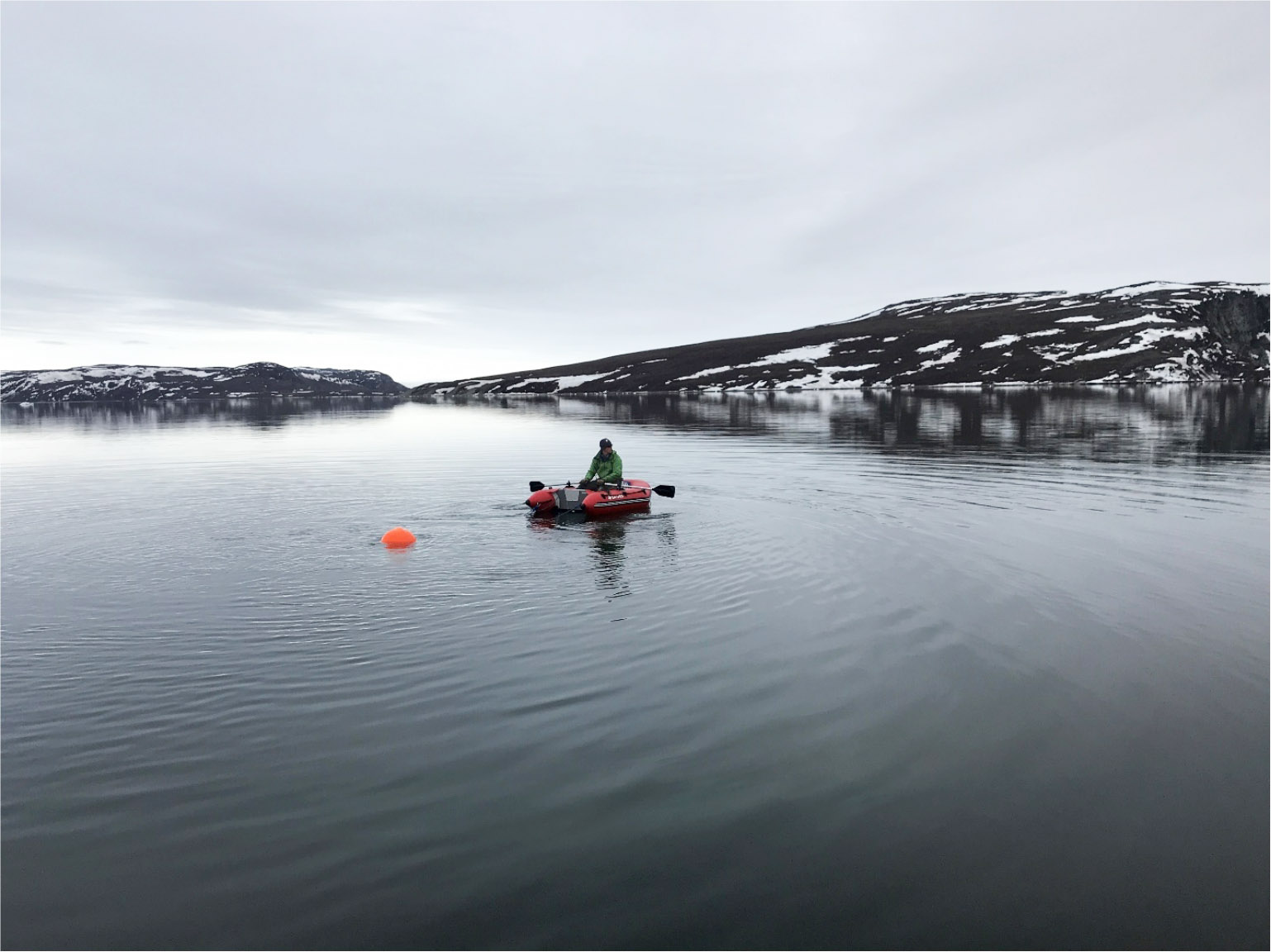Sea Level Variation Study Using GPS and an Ice Profiling Sonar

Dr. David Holland of New York University, in collaboration with Dr. Natalya Gomez at McGill University, is leading an investigation of sea level variations in the Disko Bay region of western Greenland.
 The mooring being prepared on shore at the water's edge.
The mooring being prepared on shore at the water's edge.
A shore-based system compares the direct arrival of GPS signals to the signals reflected off the sea surface to obtain sea level. The presence of sea ice and icebergs complicate the measurements. A shore-mounted camera provides information about the surroundings and the presence of sea ice and icebergs when there is daylight. Underwater sonar devices can supplement the camera-based observations and eliminate the dependence on daylight to characterize the ice.
 The mooring being towed to the deployment site.
The mooring being towed to the deployment site.
An ASL Ice Profiling Sonar (IPS) was chosen to make ice-draft measurements. Two sites located within 150 m of shore in water depths of 20–30 m were selected. One of the sites near Jakobshavn Glacier could not be accessed by a boat so it had to be accessed by a combination of helicopter and a small rubber boat. ASL's engineering team was tasked with designing and building a lightweight mooring system which could be deployed by two people using the small rubber boat. In the summer of 2018, the field team successfully deployed both mooring systems. The team is currently looking forward to the 2019 field season to service the shore-based and mooring-based instruments and recover the data stored on site.

